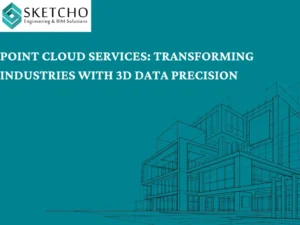The journey of digital construction has been quite long, starting in the 1970s when first attempts were made to use computer modeling for construction. In fact, these early efforts laid the foundation for what today is called Building Information Modelling, or simply BIM.
Nowadays, BIM IT has totally changed the construction industry by providing a lot of benefits and creating new chances.
So, what is BIM IT, and why is it considered the future of digital construction?
The beginning of the BIM IT understanding requires referring to what was meant by BIM itself. BIM, or Building Information Modeling, is a digital representation of both the physical and functional characteristics of a building. This model is a shared knowledge resource that offers a reliable basis for making decisions about a building throughout its life cycle. BIM IT applies these principles through the advent of advanced tools in information technology.
The Evolution of BIM IT
BIM IT has, over the decades, changed significantly. The early models on the computer were simple with a primary concentration on geometric data, but as technology moved forward, so did the capabilities of BIM. It was during the 1990s that BIM began to apply complex data such as materials, scheduling, and cost, thus starting the integration. This integration marks the beginning of what we now recognize as comprehensive BIM IT solutions.
A study showed that 49% of construction firms were already using BIM, an indication of its present and future significance to the industry. Fast-track to today, and BIM IT is practically ubiquitous in major construction projects worldwide. Why? Because it offers unparalleled advantages in terms of accuracy, efficiency, and collaboration.
Why BIM IT is Revolutionizing Construction
1. Enhanced Collaboration and Communication
One of the major advantages of BIM IT is that it enables excellent collaboration among project participants. It means that architects, engineers, contractors, and clients take up the same digital model for reference so that everyone can be on the same page. Further, this transparency reduces the chances of mistakes and miscommunication.
2. Higher Accuracy, Lesser Errors
In traditional building processes, there are many expensive delays due to errors or inaccuracies. Thankfully, such cases are significantly minimized when using BIM IT. The level of detailed and accurate planning that is possible with the digital model reduces the chances of construction mistakes to the barest minimum.
3. Time and Cost Efficiency
BIM IT simplifies the construction process by making it more effective. It allows the foreseen vision and proper planning of every section in advanced stages that assists in viewing potential problems beforehand, thus saving time and money. A report from McKinsey & Company reveals that projects using BIM IT can reduce construction costs by up to 20% or more.
4. Sustainability
Sustainability is a great concern in the modern world. BIM IT supports sustainable construction through better management of resources and the reduction of generated waste. It helps in optimizing the energy efficiency of the building, which is very crucial in constructing environment-friendly buildings.
Challenges in BIM IT Implementation
Another challenge may be the upfront cost of implementing BIM IT. Advanced BIM IT tools and software are quite expensive; hence, it is an expensive venture for any construction company to implement.
There is also a learning curve connected with the adoption of BIM IT. New training of the staff is required with regard to the use of new tools, which could be very time-consuming and costly. Resistance to organizational change may also be an issue for those organizations that have been into traditional methods for decades.
The Future of BIM IT
So, what about the future of BIM IT? It is going in an increasing motion, so obviously, it will keep on growing and getting updated. One of the trends which is arising is the integration of AI with BIM. AI will be able to help in predictive analysis for finding out problems before they happen and also suggest optimal solutions.
Also, more often than not, Virtual Reality and Augmented Reality are getting integrated into BIM IT to simulate virtual experiences. This too can facilitate the stakeholders in conceptualizing the project in a more interactive way, thereby enhancing understanding and collaboration.
Yet another exciting development is in the realm of using BIM IT in smart cities. With increasing emphasis on urbanization, BIM IT can play a very crucial role in designing and managing smart city infrastructure.
This is evident from statistics, which show that the global market for BIM will reach a value of USD 16.72 billion by 2029, showing its increasing importance.
Conclusion
BIM IT is indeed the future for digitalized construction. It enhances collaboration, accuracy, and efficiency; hence, it has become an indispensable tool within the construction industry. Even though there are various barriers in the process of its adoption, the long-term benefits of such a step significantly outweigh the short-term ones.
With the development of technology, BIM IT will continue to develop to be even more sophisticated and central in construction projects.





